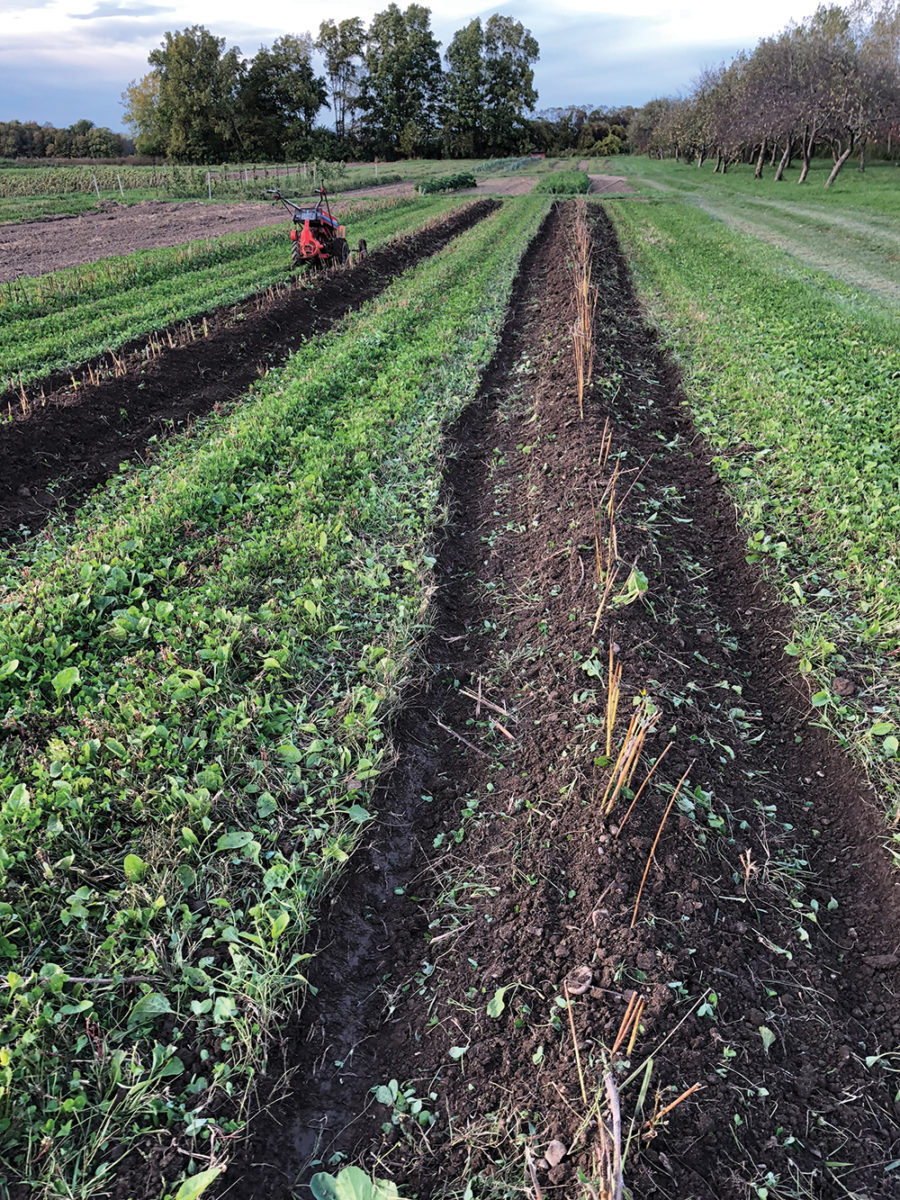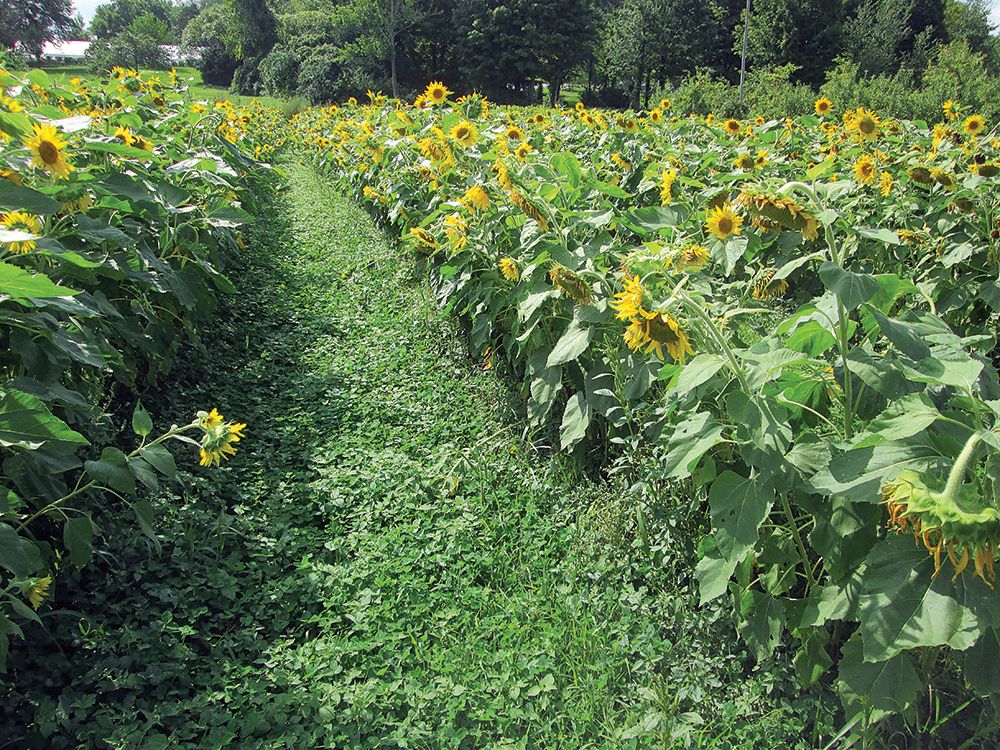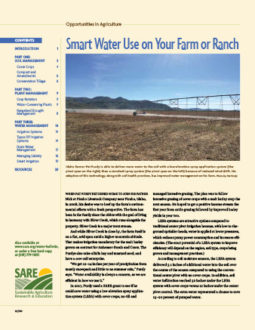Like many farmers in the Northeast, Louis Lego, Jr. has increasingly faced flooding and drought troubles while he grows certified organic fruits and vegetables at Elderberry Pond Country Foods in Auburn, N.Y. In 30 years of farming, Lego has never seen a greater climate challenge. But through trial and error, he has finally found an effective way to manage his soil for the extremes.


“The last three years, every spring has gotten worse with heavy rains and flooding. The water was not getting absorbed,” he states. “We have a nice loam soil, but the fine particles were coming to the top in our flat fields, creating a layer that made it difficult for water to filter down.”
As an organic farmer, Lego is required to plant cover crops every three years. But they were no match for the impact of heavy precipitation on the soil. Lego first tried adding more drainage tiles. His neighbors did as well, and the result was more water draining into streams and causing flooding. They expanded their pond to catch more water and tried hybrid mulching techniques. Neither of those strategies worked well either. So, Lego turned to “wicking hills,” a type of raised bed system that contains natural wicking/drainage materials in the form of straw or plant stalks. In his case, Lego used sunflower stalks.
Supported by a SARE grant, Lego designed his wicking hill system for vegetable production, and he notes that root crops do very well in the raised rows, including carrots, onions, garlic and potatoes. The only equipment requirements were a rotary plow and a seed spreader. He planted sunflowers in the rows of hills he created during the first year. The leftover sunflower stalks become the wicking fiber for new wicked hills in subsequent years. The sunflowers also provide value-added cut flowers and chicken feed.
“Wicking hills have been by far the best solution for keeping water on the farm—higher soil moisture and no flooding. It is a natural irrigation and flood protection system. But it takes some time and effort up front to put the hills in place. It is a multi-step, multi-year process.”
Louis Lego, Jr., Auburn, N.Y.
The second year, the raised rows use the high-carbon sunflower residue to stabilize the hills. They also drain excess moisture when it is wet and draw up water to keep soils moist when it is dry, through capillary action.
In between the hilled rows, Lego plants a cover crop of medium red clover. The clover absorbs excess water during storms and improves soil health. Soil quality tests confirm higher nutrient availability, more neutral soil pH and higher organic matter content.
Lego is still evaluating the long-term results of the SARE-funded trial. For example, the clover cover begins to deteriorate after a couple of seasons and may need to be periodically reseeded.
“It is a lot of work to put the hills in, but we believe it has been worth it,” he affirms. “We have no weed issues, no water runoff and no replanting. Our pickers have better conditions standing in clover rather than in mud, and our crop yield and vegetable quality surpassed our expectations.”
Elderberry Pond supplies vegetables, fruits and meat to its on-farm retail store, farmers’ markets and its own restaurant, promoting small-scale sustainable farming and demonstrating the quality and nutrition of local food production. Lego also makes presentations to farm groups about the wicking hills system and invites visitors to the farm to see how it works first hand.
“We have converted the whole 25-acre production area to this system,” says Lego. “It is very sustainable, good for small farms and easy to adapt for home gardens.”
